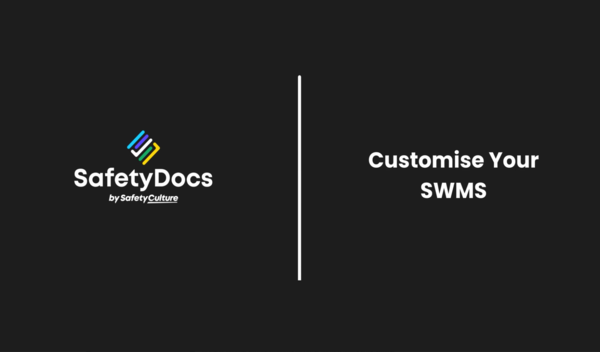Roller Operation Safe Work Method Statement
- Instant Document Delivery via Email.
- Add your logo easily.
- Add or delete information to any SWMS template.
- Customisation instructions provided.
- Complies with Australian & New Zealand legislation.
- Microsoft Word Format (Fully editable).
- Only pay once (no subscriptions required).
Roller Operation Safe Work Method Statement
This Roller Operation Safe Work Method Statement (SWMS) covers hazards and controls with the view of ensuring that all reasonably practicable steps have been taken to prevent the likelihood of incidents during the operation of drum and multi-wheel rollers associated with roadworks.
Job Steps Covered in Roller Operation SWMS
- Check Weather Conditions & Prepare: Addresses the control measures for extreme weather conditions.
- Working Alone: Outlines the safety protocols for solo work, including emergency communication.
- Arrival On-site & Assess On-site Conditions: Details the initial site assessment for safety hazards.
- Work Area Set-up: Describes setting up a safe work zone, especially when adjacent to traffic.
- Environment: Focuses on minimising environmental impact and managing pollutants.
- Housekeeping: Emphasises the importance of maintaining a clean and safe work area to prevent slips, trips, and falls.
- Manual Tasks: Covers the control measures for reducing the risk of musculoskeletal injuries.
- Delivery, Set-up & Removal of the Roller: Details the precautions for safely transporting and setting up the roller.
- Establish a Communication System with Ground Workers: Highlights the importance of effective communication between operators and ground workers.
- Roller Operation: Outlines the safe operation of rollers, including pre-use checks and operational controls.
- Working Outside the Cabin near the Powered Mobile Plant: Addresses the safety of ground workers around operating machinery.
- Lifting the Roller using a Crane or Excavator: Details the safe lifting and moving of rollers with cranes or excavators.
- Changing Attachments: Provides guidelines for safely changing roller attachments.
- Onsite Maintenance: Covers the safety protocols for performing maintenance on rollers.
- Fuelling the Roller: Outlines the precautions for safely refuelling rollers to prevent fire or explosion.
- On Completion: Details the steps to safely shut down and secure the roller after use.
- Emergency Response: Provides protocols for responding to emergencies during roller operations.
Each purchase of our SWMS comes with a complimentary copy of the Legislation & Codes of Practice Reference List, valued at $19.95. This valuable resource provides an up-to-date overview of relevant laws and standards, further supporting your compliance efforts.
Key Features of the SWMS
- Comprehensive Risk Management: Outlines control measures for a wide range of potential hazards.
- Regulatory Compliance: Adherence to Australian legislation.
- Customisable Content: Allows for easy addition of company logo and specific job details.
- Emergency Response: Includes protocols for emergencies.
Who is it Suitable For?
This document is essential for businesses and contractors involved in construction, roadworks, and any operations requiring the use of rollers, ensuring the safety of workers and compliance with health and safety regulations.
Ensure your team operates rollers safely and in compliance with the latest industry standards. Get your copy today and take a proactive step toward a safer workplace.
- Instant Document Delivery via Email.
- Add your logo easily.
- Add or delete information to any SWMS template.
- Customisation instructions provided.
- Complies with Australian & New Zealand legislation.
- Microsoft Word Format (Fully editable).
- Only pay once (no subscriptions required).
Roller Operation Safe Work Method Statement
This Roller Operation Safe Work Method Statement (SWMS) covers hazards and controls with the view of ensuring that all reasonably practicable steps have been taken to prevent the likelihood of incidents during the operation of drum and multi-wheel rollers associated with roadworks.
Job Steps Covered in Roller Operation SWMS
- Check Weather Conditions & Prepare: Addresses the control measures for extreme weather conditions.
- Working Alone: Outlines the safety protocols for solo work, including emergency communication.
- Arrival On-site & Assess On-site Conditions: Details the initial site assessment for safety hazards.
- Work Area Set-up: Describes setting up a safe work zone, especially when adjacent to traffic.
- Environment: Focuses on minimising environmental impact and managing pollutants.
- Housekeeping: Emphasises the importance of maintaining a clean and safe work area to prevent slips, trips, and falls.
- Manual Tasks: Covers the control measures for reducing the risk of musculoskeletal injuries.
- Delivery, Set-up & Removal of the Roller: Details the precautions for safely transporting and setting up the roller.
- Establish a Communication System with Ground Workers: Highlights the importance of effective communication between operators and ground workers.
- Roller Operation: Outlines the safe operation of rollers, including pre-use checks and operational controls.
- Working Outside the Cabin near the Powered Mobile Plant: Addresses the safety of ground workers around operating machinery.
- Lifting the Roller using a Crane or Excavator: Details the safe lifting and moving of rollers with cranes or excavators.
- Changing Attachments: Provides guidelines for safely changing roller attachments.
- Onsite Maintenance: Covers the safety protocols for performing maintenance on rollers.
- Fuelling the Roller: Outlines the precautions for safely refuelling rollers to prevent fire or explosion.
- On Completion: Details the steps to safely shut down and secure the roller after use.
- Emergency Response: Provides protocols for responding to emergencies during roller operations.
Each purchase of our SWMS comes with a complimentary copy of the Legislation & Codes of Practice Reference List, valued at $19.95. This valuable resource provides an up-to-date overview of relevant laws and standards, further supporting your compliance efforts.
Key Features of the SWMS
- Comprehensive Risk Management: Outlines control measures for a wide range of potential hazards.
- Regulatory Compliance: Adherence to Australian legislation.
- Customisable Content: Allows for easy addition of company logo and specific job details.
- Emergency Response: Includes protocols for emergencies.
Who is it Suitable For?
This document is essential for businesses and contractors involved in construction, roadworks, and any operations requiring the use of rollers, ensuring the safety of workers and compliance with health and safety regulations.
Ensure your team operates rollers safely and in compliance with the latest industry standards. Get your copy today and take a proactive step toward a safer workplace.


